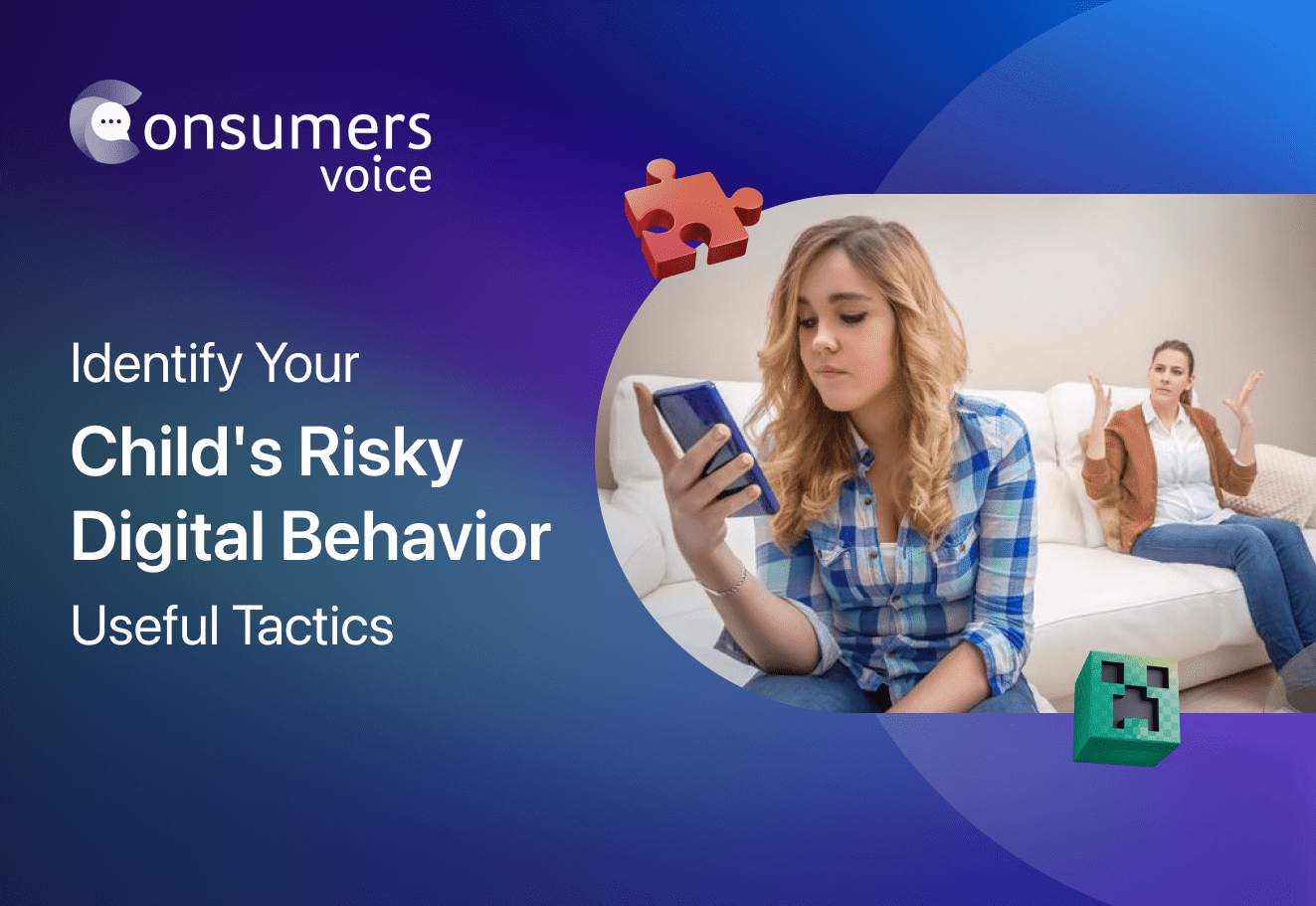Identify Your Child’s Risky Digital Behavior – Useful Tactics

Are your children safe digitally when using their devices or interacting with people online? There is no doubt in accepting the reality of digital threats for kids. However, do you know that mostly your children attract these threats and issues through their actions? Yes, certain digital behavior can make your kids fall into a pit of dangers.
Take a minute and explore these risky behaviors that can make your child get drowned in the waves of digital threats.
Sharing Too Much Online About Life
Picture this: Your child sharing every detail of their life online, from breakfast to bedtime stories. While it might seem cute, it’s crucial to teach them about the importance of privacy. The habit of sharing too much about their activities and personal life is a threatening behavior. They are putting themselves at risk.
Help your child understand that not everything needs to be shared with the entire internet. Encourage them to keep their real-time life events private and not to overshare their thoughts, even about random topics. Instead, keep conversations open with them so they will share their thoughts and feelings with you.
Keeping Simple or Monotonous Passwords
Passwords are like secret codes that keep our digital spaces safe. If your child’s passwords are as simple as 1234 or their pet’s name, it’s time for a little password upgrade. Keeping similar or easy-to-decode passwords is not a safe practice at all. It can risk your child’s digital devices and accounts of theft or hack.
Teach them the fun of creating strong passwords by using a mix of letters, numbers, and special characters. It’s like creating a super cool secret language that only they can understand. Also, guide them to change their passwords after a specific interval to ensure maximized safety.
Connecting to Public Wi-Fi Frequently
Public Wi-Fi might seem like a superhero for our internet needs, but it can be a sneaky villain too. Explain to your child that using public Wi-Fi can sometimes be risky. Hackers can easily sneak into the network and use it to penetrate all connected devices. Encourage them to use secure networks, like the one at home, to keep their online adventures safe and sound.
Connecting Devices to Public Charge Spots
Finding a charging spot when the device’s battery is draining in the middle of a game is like a bounty for kids. They are eager to hit the bolt and get a little bit of charge in their device to finish the game. Currently, the charging spots are frequent at public places, and kids are more than comfortable using them.
It’s an alarming situation. These spots are not as safe as you think. Firstly, the spots are not safe as you cannot trust the spot management. On the other hand, these are prone to hacking and invasions. Predators can easily get hold of these stations and copy device information or infiltrate viruses into the devices too. Guide your kids about sticking to trusted chargers at home. Make them aware to charge devices when leaving home or carry a power bank for emergencies.
Adding New Apps
New apps are like new friends – exciting but not always trustworthy. Teach your child to check with you before adding any new apps. You can use FamilyTime Approve to get notifications whenever your child tries to install a new app. You can either approve or reject the installation.
It’s better to explore the app’s features together and make sure it’s safe and age-appropriate. By doing this, your child will learn to choose digital friends wisely and avoid any unwanted surprises.
Not Vetting the Unused or Outdated Apps
Just like cleaning out old toys, it’s essential to tidy up digital spaces too. If your child has apps they no longer use, it’s time to bid them farewell. Explain the importance of keeping their digital space clutter-free. Removing unused apps not only frees up space but also ensures that only safe and current apps are part of their digital world.
Not Installing OS Updates
All the OS updates are mostly about better performance and security. Not installing them makes the devices lag at default security. When your child is not updating the OS, it’s essential to make them learn it and guide them through the update process.
Wrap Up!
In the grand adventure of the digital world, keeping an eye on these habits will help your child navigate safely. By fostering open communication and teaching them these smart tactics, you’re giving them the tools to be digital superheroes. So, let’s join forces to create a secure online space where our kids can explore, learn, and have fun while staying safe and sound.
